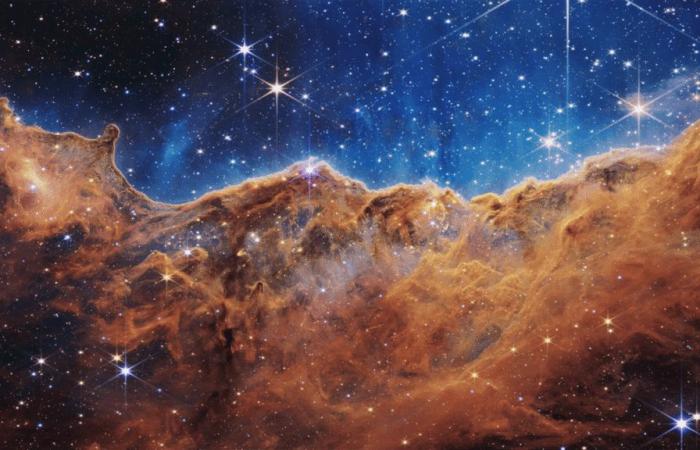The arrival of the James Webb space telescope (JWST, by its name in English) was a new era in space images. Until 2021, the most amazing space photographs were the work of the Hubble telescope, whose technology dates back to 1990. One of the most shocking results of the latest generation instrument was unveiling in July 2022 of a stellar formation known as the “cosmic cliffs.”
Three years after the capture of the cosmic cliffs, a new vision of that scene has been published. It is a 3D trip through the space structure generated from all infrared information captured by the JWST. With the commission of these audiovisual productions, NASA tries to create new dissemination materials that allow a better understanding of the dimensions of spatial clusters and nebulae.
The video was presented by NASA at the event of the International Planetarium Society to commemorate the centenary of the first public planetarium, founded on May 7, 1925 in the Deutsches Museum in Munich, Germany.
-
Exploring the cosmic cliffs in 3D.
Cosmic cliffs seem mountains in space, but they are concentrated gases that are part of a small nebula on the periphery of the Carina Nebular Complex. The entire region works like a stars factory. There is so much cosmic gas and dust in the nebula that starts from the matter ends up concentrating on a single point and collapsing by its own severity. According to some estimates, there are approximately 100,000 young stars and the training rate is one to two stars per century.
The JWST has proven to be an effective tool in space exploration thanks to its ability to capture the infrared light of cosmic structures. Infrared waves can cross without difficulty some regions of the space where dust and gas are concentrated. With its sensors, the latest James Webb telescope can observe very distant objects to an unprecedented resolution. The main objective is to grant images of the structures that were formed in the early stages of the universe.
The telescope has a main mirror of 6.5 meters. In comparison, the Hubble measures 2.4 meters. Double size allows you to collect more infrared information from the early universe. In addition, it is 1.5 million kilometers away from the earth, at the point of Lagrange L2, which protects it from earthly heat and environmental light.






